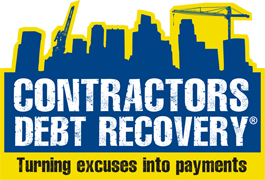The Importance of Valuing Your Work
Few contractors understand the need for an easy-to-understand method of valuing their work. In a payment dispute, getting the client to accept that additional work means additional cost is only half the battle.
The real battle is agreeing on what that additional work is worth: how is it valued?
The parties then look to the contract or agreement for guidance on value, and most of the time there is nothing there. For example, if you agreed to excavate a trench for a lump sum fee of $15 000, what is the value of excavating an additional 20 metres? Without an agreed rate the parties will argue forever.
So at every stage of your work, starting at quote stage you must always be considering the ‘what if’ scenarios. What if a few more of these were needed? What if more lineal metres are required? What if that plant is required for longer?
Let’s look at some of the easiest ways to nail down the value of additional work:
Schedule of Rates
This is by far the easiest way to value additional work. Get agreement in advance on what various items are worth. Think about your unit of measure; per metres, per cubic metre, per tonne, per room, per item, and so on.
I recently was involved in a dispute about bricklaying. The parties agreed on a lump sum for the work, but there was no guidance about how to value the bricks laid between each progress payment. The parties agreed on a rate per square metre to resolve this. Then the wall area simply needed to be measured up.
Think carefully about the best ‘unit of measure’ for your trade and calculate rates for each one. This way the argument won’t be about value, but about quantity. That is a far easier matter to handle. You just need to count it.
Cost Plus
This method of valuation is based on the invoiced cost of materials or subcontracted work, plus an agreed percentage. This method only works if you can produce complete records of your cost, and your client is satisfied that the invoice cost is within market rates. But when this method works it stops any argument about value, because the value is there in black and white on the invoices.
If possible you can agree with your client beforehand on who your main suppliers will be and that will stop any argument about whether your ‘at cost’ invoices are genuine.
Quote by Quote
This is the best method for managing additional work. Simply supply a quote for it as you go. Many contracts require additional work to be approved in writing. Use this to your advantage. Simply supply a small quote for the additional work, and within that quote you can also include a schedule of rates.
For example you may supply a quote to install 2 additional switchboards. Assume you quote a lump sum figure for this work. You could supply a schedule of rates for additional cabling, wiring, conduit, etc. You never know what might happen. I once had a client who installed fire reels. But as soon as he installed it, the client got him to move it. This went on nearly a dozen times. If he had had a rate for removal and re-installation upfront, a lot of the argument would have gone away.
Quantity Surveyors
If there is no resolution you can employ a quantity surveyor to calculate the quantity and value of work completed. Again, it could be agreed beforehand that each claim will be valued by an independent QS. This is especially useful on work such as civil works, where it can often be hard to establish exact quantities of work completed.
These methods will all help you, but for them to work you need to develop a keen sense of anticipating what your client might argue about. Use your experience.
For example, for a bricklayer it would be smart to include in any quote a schedule of rates that apply to additional square metres of brickwork. For an electrician, an hourly rate for labour, and an agreed rate for additional materials (maybe cost-plus). For a steel fabricator, perhaps a rate per tonne plus a labour rate would work.
Think about all the arguments you’ve had about variations in the past, and think about how agreed rates might have killed the argument off before it started.
A clear and easy-to-apply method of valuation is an important part of any agreement. It prevents parties from arguing about what work is worth.
